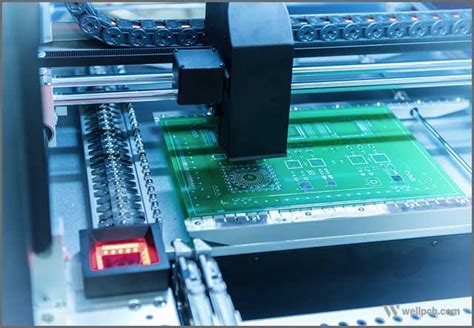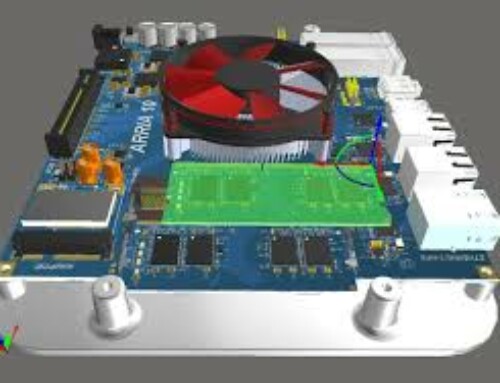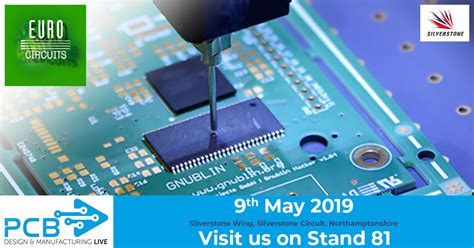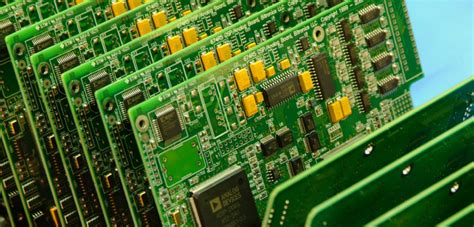Reliability Design of PCB Boards for High-speed DSP Systems
This article introduces the characteristics of PCB boards for high-speed DSP systems and several issues that should be paid attention to in reliability design, including power supply design, software and hardware anti-interference design, electromagnetic compatibility design, heat dissipation design, and wiring methods for important signal lines of high-speed circuits, so that each design is more reasonable and easy to implement in engineering.
Due to the rapid development of microelectronics technology, digital electronic systems composed of IC chips are developing rapidly in the direction of large scale, small size, and fast speed, and the development speed is getting faster and faster. The application of new devices leads to high density of circuit layout in modern EDA design, and the frequency of signals is also very high. With the use of high-speed devices, there will be more and more high-speed DSP (digital signal processing) system designs. Processing signal problems in high-speed DSP application systems has become an important design issue. In this design, its characteristics are that the system data rate, clock rate and circuit density are constantly increasing. The design of its PCB printed board shows completely different behavioral characteristics from the low-speed design, that is, signal integrity problems, interference aggravation problems, electromagnetic compatibility problems, etc.

These problems can cause or directly bring about signal distortion, timing errors, incorrect data, address and control lines, system errors and even system crashes.
If not properly resolved, it will seriously affect system performance and bring immeasurable losses. The solution to these problems mainly depends on circuit design. Therefore, the design quality of PCB printed boards is very important. It is the only way to turn the optimal design concept into reality. The following discusses several issues that should be paid attention to in the reliability design of PCB boards in high-speed DSP systems.
Power supply design
The first thing to consider in the design of PCB boards for high-speed DSP systems is the power supply design problem. In power supply design, the following methods are usually used to solve signal integrity problems.
Consider the decoupling of power supply and ground
With the increase in the operating frequency of DSP, DSP and other IC components tend to be miniaturized and packaged densely. Usually, multi-layer boards are considered in circuit design. It is recommended that both power supply and ground can use a dedicated layer, and for multiple power supplies, such as DSP I/O power supply voltage and core power supply voltage are different, two different power supply layers can be used. If the processing cost of multi-layer boards is high, the power supply with more wiring or relatively critical can be used in a dedicated layer. Other power supplies can be wired like signal lines, but it should be noted that the line width should be sufficient.
Whether the circuit board has a dedicated ground layer and power supply layer, a certain and reasonably distributed capacitor must be added between the power supply and the ground. In order to save space and reduce the number of through holes, it is recommended to use more surface mount capacitors. The chip capacitor can be placed on the back of the PCB board, i.e. the welding surface. The chip capacitor is connected to the through hole with a wide line and connected to the power supply and ground layer through the through hole.
Consider the wiring rules of power distribution
Separate the analog and digital power layers
High-speed and high-precision analog components are very sensitive to digital signals. For example, the amplifier will amplify the switching noise and make it close to the pulse signal, so the power layer is generally required to be separated in the analog and digital parts of the board.
Isolate sensitive signals
Some sensitive signals (such as high-frequency clocks) are particularly sensitive to noise interference, and high-level isolation measures must be taken for them. High-frequency clocks (clocks above 20MHz, or clocks with a flip time of less than 5ns) must be escorted by ground wires. The clock line width must be at least 10mil, and the escort ground line width must be at least 20mil. The two ends of the protective ground wire of the high-frequency signal line must be in good contact with the ground layer through vias, and vias must be drilled every 5cm to connect to the ground layer; a damping resistor of 22Ω~220Ω must be connected in series on the clock sending side. Interference caused by signal noise brought by these lines can be avoided.
Software and hardware anti-interference design
Generally, high-speed DSP application system PCB boards are designed by users according to the specific requirements of the system. Due to limited design capabilities and laboratory conditions, if perfect and reliable anti-interference measures are not taken, once the working environment is not ideal and there is electromagnetic interference, the DSP program flow will be disordered. When the normal working code of the DSP cannot be restored, the program will run away or freeze, and even some components will be damaged. It is necessary to take appropriate anti-interference measures.
Hardware anti-interference design
Hardware anti-interference efficiency is high. When the system complexity, cost and volume are tolerable, hardware anti-interference design is preferred. Commonly used hardware anti-interference technologies can be summarized as follows:
(1) Hardware filtering: RC filters can greatly weaken various high-frequency interference signals. For example, it can suppress “burr” interference.
(2) Reasonable grounding: Reasonable design of the grounding system. For high-speed digital and analog circuit systems, it is important to have a low-impedance, large-area grounding layer. The ground layer can provide a low-impedance return path for high-frequency currents, reduce EMI and RFI, and shield external interference. Separate the analog ground and digital ground during PCB design.
(3) Shielding measures: AC power supply, high-frequency power supply, high-voltage equipment, and arc sparks will generate electromagnetic waves and become noise sources of electromagnetic interference. The above devices can be surrounded by metal shells and then grounded. This is very effective in shielding interference caused by electromagnetic induction.
(4) Optoelectronic isolation: Optoelectronic isolators can effectively avoid mutual interference between different circuit boards. High-speed optoelectronic isolators are often used in the interface between DSP and other devices (such as sensors, switches, etc.).
Software anti-interference design
Software anti-interference has advantages that cannot be replaced by hardware anti-interference. In DSP application systems, the anti-interference ability of software should be fully explored to minimize the impact of interference. The following are several effective software anti-interference methods.
(1) Digital filtering: The noise of analog input signals can be eliminated by digital filtering. Commonly used digital filtering techniques include: median filtering, arithmetic mean filtering, etc.
(2) Set traps: Set a boot program in an unused program area. When the program is interfered and jumps to this area, the boot program will force the captured program to the specified address, where a special program will be used to process the faulty program.
(3) Instruction redundancy: Insert two or three bytes of no-operation instructions NOP after two-byte instructions and three-byte instructions to prevent the program from automatically returning to normal when the DSP system is interfered with and the program runs away.
(4) Set watchdog timing: If the out-of-control program enters a “dead loop”, the “watchdog” technology is usually used to get the program out of the “dead loop”. The principle is to use a timer that generates a pulse according to a set period. If you do not want to generate this pulse, the DSP should clear the timer within a time less than the set period; but when the DSP program runs away, the timer will not be cleared as required, so the pulse generated by the timer is used as a DSP reset signal to reset and initialize the DSP.
Electromagnetic compatibility design
Electromagnetic compatibility refers to the ability of electronic equipment to work normally in a complex electromagnetic environment. The purpose of electromagnetic compatibility design is to enable electronic equipment to suppress various external interferences and reduce the electromagnetic interference of electronic equipment to other electronic equipment. In actual PCB boards, there is more or less electromagnetic interference between adjacent signals, namely crosstalk. The size of crosstalk is related to the distributed capacitance and distributed inductance between loops. The following measures can be taken to solve this mutual electromagnetic interference between signals:
Choose a reasonable wire width
The impact interference generated by transient current on the printed lines is mainly caused by the inductance component of the printed wire, and its inductance is proportional to the length of the printed wire and inversely proportional to the width. Therefore, using short and wide wires is beneficial to suppress interference. The signal lines of clock leads and bus drivers often have large transient currents, and their printed wires should be as short as possible. For discrete component circuits, the printed wire width of about 1.5mm can meet the requirements; for integrated circuits, the printed wire width is selected between 0.2mm and 1.0mm.
Use a well-shaped mesh wiring structure.
The specific method is to wire horizontally on one layer of the PCB printed board and vertically on the next layer.
Heat dissipation design
To facilitate heat dissipation, the printed circuit board is best installed independently, and the board spacing should be greater than 2cm. At the same time, pay attention to the layout rules of components on the printed circuit board. In the horizontal direction, high-power devices are arranged as close to the edge of the printed circuit board as possible to shorten the heat transfer path; in the vertical direction, high-power devices are arranged as close to the top of the printed circuit board as possible to reduce their impact on the temperature of other components. Components that are sensitive to temperature should be placed in areas with relatively low temperatures as much as possible, and should not be placed directly above devices with high heat generation.
Conclusion
In the various designs of high-speed DSP application systems, how to transform perfect designs from theory into reality depends on high-quality PCB printed circuit boards. The operating frequency of DSP circuits is getting higher and higher, the pins are getting denser and denser, and the interference is increasing. How to improve the quality of signals is very important. Therefore, whether the performance of the system is good or not is inseparable from the quality of the designer’s PCB printed circuit board. If the design can be reasonably laid out, noise can be reduced, interference can be reduced, and unnecessary mistakes can be avoided, it will play an underestimated role in the performance of the system.







